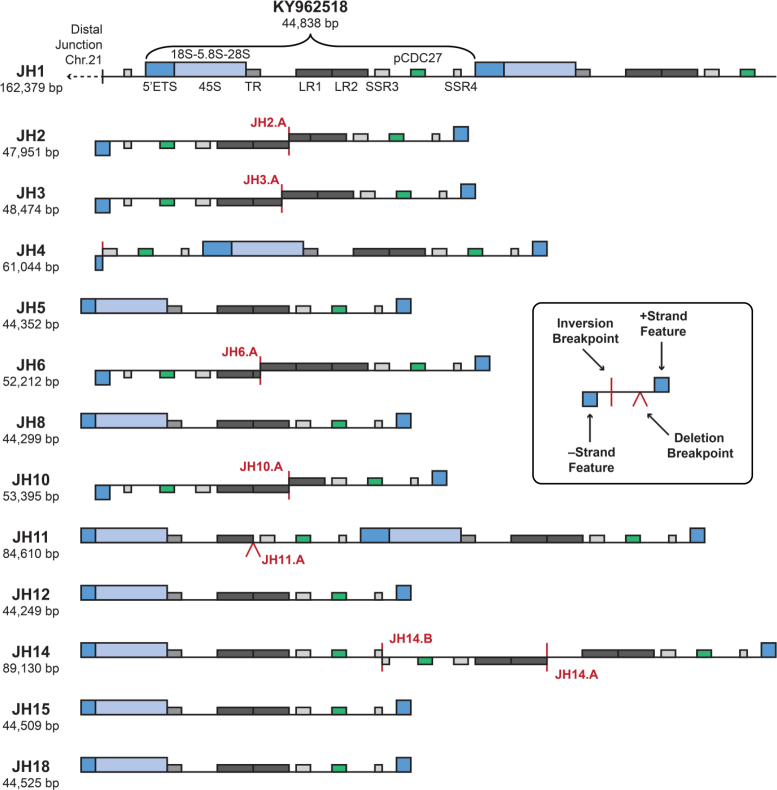Figure 2.
Schematic structural organization of rDNA-containing BAC clones isolated by TAR from the human chromosome 21. Structures of the individual isolated BACs are illustrated, highlighting rDNA coding and IGS regions. The bracket spans the new reference rDNA sequence derived from JH1, starting from the 5′ETS, deposited as GenBank Accession KY962518. Clones JH2 and JH3, isolated with TAR vector #2 (in which one of the hooks is inverted; see Figure 1C) contain two IGS sequences in a head-to-head configuration consistent with the presence of palindromic structure in rDNA arrays. Another clone with palindromic rDNA sequences, clone JH14, was isolated with TAR vector #11, with the hooks in the same orientation. As illustrated, this clone contains a double palindromic structure that resulted in a final ‘correct’ orientation of the targeted sequences in rDNA array. Notably, this highly rearranged region contains the pseudogene CDC27 (green bar). Vertical red lines indicate inversion break points. Exact coordinates of break points and inversions are listed in Supplementary Table S3. Carats indicate an IGS truncation by deletions. Annotated BAC sequences can be downloaded from GenBank under the Project Accession# PRJNA38015. TR: Tandem repeat; LR1 and LR2: Long repeats; SSR3 and SSR4: Simple sequence repeats; pCDC27: CDC27 pseudogene. SSR1 and SSR2 are nested within LR1 and LR2 and are omitted here for clarity (see Figure 3).

